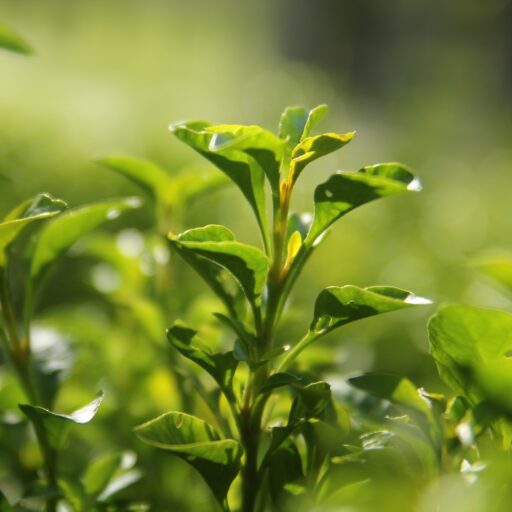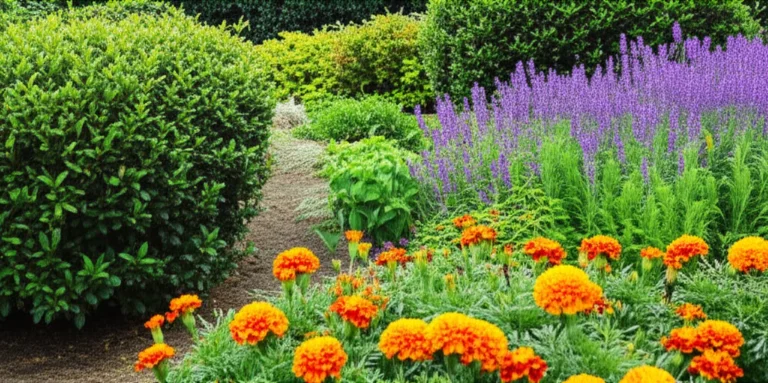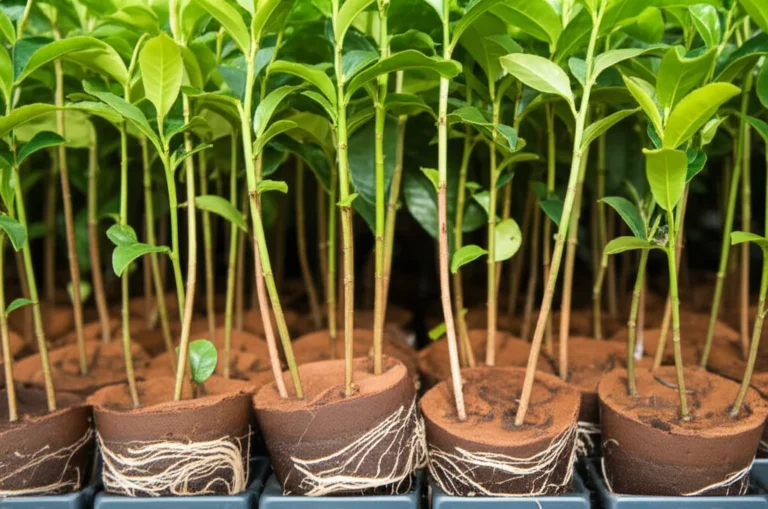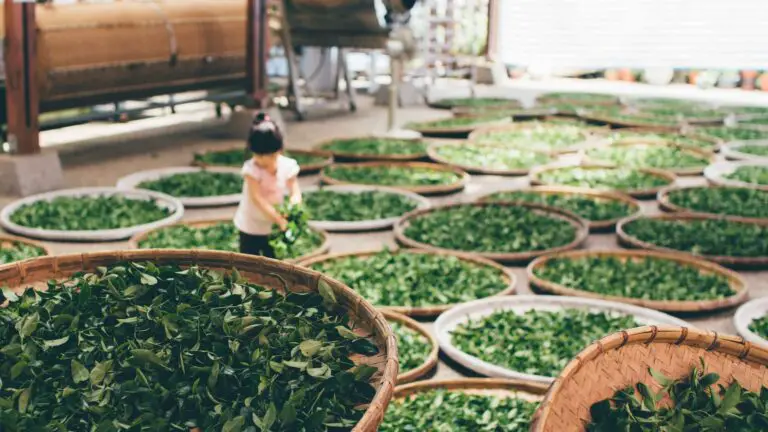Support our educational content for free when you purchase through links on our site. Learn more
Is It Worth Growing Your Own Herbs? 8 Surprising Reasons (2025) 🌿
Have you ever wondered if those little plastic herb packages from the grocery store are really worth the price — or if growing your own herbs at home might be the tastier, fresher, and more rewarding option? We’ve been there too, skeptics at first, until we experienced firsthand the explosion of flavor and the joy that comes from snipping fresh herbs just steps from the kitchen.
In this comprehensive guide, we’ll uncover 8 surprising reasons why growing your own herbs is absolutely worth it in 2025 — from saving money and boosting nutrition to beautifying your home and reducing your environmental footprint. Plus, we’ll share expert tips from the tea growers at Growing Teas™ on how to start your own thriving herb garden, whether you have a sprawling backyard or a sunny windowsill. Ready to transform your cooking, your health, and your home? Let’s dig in!
Key Takeaways
- Growing your own herbs delivers unbeatable freshness and flavor that store-bought herbs simply can’t match.
- Homegrown herbs offer a wider variety than what’s typically available in supermarkets, unlocking new culinary adventures.
- It’s cost-effective: a small initial investment in seeds or plants pays off with months (or years!) of harvests.
- Fresh herbs boost your nutrition with vitamins, antioxidants, and medicinal properties.
- Indoor herb gardens fill your home with delightful natural aromas and can brighten any space.
- Edible landscaping combines beauty and utility, turning your outdoor space into a feast for the eyes and palate.
- Growing herbs reduces plastic waste and food miles, making it an eco-friendly choice.
- Herbs are perfect beginner plants, offering a gentle introduction to edible gardening and inspiring further green-thumb adventures.
Ready to start your herb garden journey?
- 👉 Shop Herb Seeds: Amazon | Burpee | Johnny’s Selected Seeds
- Live Herb Plants: Amazon | Walmart | Etsy
- Indoor Grow Systems: AeroGarden
Table of Contents
- ⚡️ Quick Tips and Facts
- 🌿 The Verdant History of Home Herb Cultivation
- 🤔 Is It Truly Worth It? Unearthing the Value of Growing Your Own Herbs
- 1. The Unbeatable Taste of Fresh: Elevating Your Culinary Creations with Homegrown Herbs
- 2. Unleashing a World of Flavor: Why Homegrown Herbs Offer Unmatched Variety
- 3. Smart Savings, Delicious Returns: The Economic Perks of a Kitchen Herb Garden
- 4. Nutrient Powerhouses: Boosting Your Health with Every Sprig of Fresh Herb
- 5. Aromatic Bliss: Infusing Your Home with the Natural Fragrance of Indoor Herbs
- 6. Beyond the Kitchen: Beautifying Your Outdoors with Edible Herb Landscaping
- 7. Eco-Friendly & Flavorful: Reducing Your Footprint with Homegrown Herbs
- 8. Your Green Thumb Journey Begins: Mastering Herb Growing as a Gateway to Edible Gardening
- 🌱 Cultivating Your Own Herb Garden: A Journey from Seed to Plate
- 🧑🍳 From Garden to Gourmet: Harvesting and Preserving Your Herb Bounty
- ✨ Beyond the Basics: Advanced Tips for Herb Enthusiasts
- ✅ So, Is It Truly Worth It? Our Verdict on Growing Your Own Herbs
- Conclusion
- Recommended Links
- FAQ
- Reference Links
Here is the body of the article, written as requested.
⚡️ Quick Tips and Facts
Jumping into the world of herb gardening? Here’s a quick brew of what you need to know!
- Is it cheaper to grow your own herbs? You betcha! We break down the numbers in our full guide, but the short answer is a resounding yes. A single herb plant can yield harvests for months, or even years, far out-valuing those pricey little plastic clamshells from the grocery store.
- Beginner’s Luck: Herbs are famously forgiving. As the experts at Gardenary note, they are “one of the easiest and most forgiving types of plants.” So if you think you have a “black thumb,” herbs are your chance to turn it green!
- Space? No Problem! A sunny windowsill is all you need. Herbs thrive in containers, making them perfect for apartments, patios, and tiny kitchens.
- Flavor Explosion: There’s simply no comparison between the vibrant, potent flavor of a freshly snipped herb and its sad, store-bought cousin.
- Health in a Leaf: Fresh herbs are packed with vitamins and antioxidants. Sprinkling them on your meals is an easy way to boost your nutrient intake. Check out the Health Benefits of Tea to see how many of these herbs double as wellness wonders!
- Ancient Roots: Humans have been cultivating herbs for culinary and medicinal purposes for thousands of years. The ancient Egyptians used herbs like coriander and mint, and records of their use can be found in the Ebers Papyrus, dating back to 1550 BC.
🌿 The Verdant History of Home Herb Cultivation
Before we had spice racks and supermarkets, there was the humble herb garden. For centuries, these patches of green were the heart of the home—part pharmacy, part pantry, and part teahouse! From medieval monastery gardens, where monks meticulously cultivated herbs for healing tinctures and ales, to colonial kitchen gardens brimming with thyme for stews and chamomile for calming teas, growing your own has always been a practice of self-sufficiency and flavor.
Here at Growing Teas™, we see this long history as part of a beautiful tradition. Just as people have cultivated tea for millennia, they’ve grown herbs to complement their lives and soothe their souls. This connection between home-grown plants and well-being is a story as old as time itself. Want to dive deeper into this rich past? Explore our section on the History of Tea.
🤔 Is It Truly Worth It? Unearthing the Value of Growing Your Own Herbs
So, let’s get down to the root of the matter. Is dedicating time, space, and a little bit of love to a few leafy plants really worth the effort? We’ve debated this over many cups of freshly brewed herbal tea, and our answer is a resounding YES! But don’t just take our word for it. Let’s dig into the many layers of value that a home herb garden brings to your life.
1. The Unbeatable Taste of Fresh: Elevating Your Culinary Creations with Homegrown Herbs
Have you ever made a dish and felt like it was missing… something? That something is often the vibrant, aromatic punch that only fresh herbs can provide. Store-bought herbs have a tough journey—they’re harvested, packaged, shipped, and then they sit on a shelf waiting for you. By the time they reach your kitchen, their precious essential oils, which carry all the flavor and aroma, have significantly diminished.
As one writer at BBC Good Food puts it, using fresh herbs adds a “level of completeness you just can’t achieve from a jar of dried stuff.” The folks at Gardenary agree, stating that even if you use store-bought herbs immediately, “they still won’t taste as good as homegrown ones.”
Our Story: I’ll never forget the first time I made mint tea using leaves straight from my own pot. I’d always used dried tea bags, but the explosion of cool, crisp flavor from the fresh leaves was a revelation. It was like tasting mint in high definition for the first time! That’s the magic you unlock when your garden is just a snip away.
2. Unleashing a World of Flavor: Why Homegrown Herbs Offer Unmatched Variety
Walk into any supermarket, and you’ll find the usual suspects: curly parsley, a lonely bunch of cilantro, maybe some basil. But what about Thai basil, lemon basil, or purple basil? What about pineapple sage, chocolate mint, or orange thyme? The world of herbs is vast and wonderfully weird, but you’d never know it from the grocery aisle.
Growing your own throws the doors wide open. You become the curator of your own flavor library. As Gardenary points out, “You could have your own herb garden filled with nothing but different types of basil and still be blown away at the flavor variations.” This is your chance to experiment with tastes you can’t buy. Imagine crafting your own unique tea blends with herbs you’ve nurtured yourself—a true DIY Tea Blending adventure!
Ready to explore? Check out the incredible variety of seeds available:
- 👉 Shop Herb Seeds on: Amazon | Etsy
- Specialty Sellers: Burpee | Johnny’s Selected Seeds
3. Smart Savings, Delicious Returns: The Economic Perks of a Kitchen Herb Garden
Those little plastic packages of “fresh” herbs at the store come with a surprisingly hefty price tag, especially when you consider how quickly they wilt. A few sprigs of thyme can set you back several dollars, and you often end up throwing half of it away.
Growing your own completely flips the script. A single packet of seeds or a starter plant is a small initial investment that pays for itself over and over. Nicole Burke of Gardenary highlights this perfectly: “If you can keep an herb alive for even just a couple months, you will enjoy the highest return on your investment of any edible plant.” She gives the example of a mint plant costing less than a small plastic bag of mint sprigs, yet the plant provides a near-endless supply. It’s a no-brainer!
4. Nutrient Powerhouses: Boosting Your Health with Every Sprig of Fresh Herb
Don’t let their delicate size fool you; fresh herbs are nutritional giants. They are concentrated sources of vitamins, minerals, and antioxidants. The team at Maple + Mango notes that “not only do fresh herbs amp up the flavor of your dishes but they also add a nutritional boost too.”
Here’s a quick look at the wellness wonders hiding in your garden:
| Herb | Potential Health Benefits |
|---|---|
| Rosemary | May boost the immune system and improve circulation. |
| Parsley | Rich in vitamins A, C, and K; a natural diuretic. |
| Mint | Known to soothe nausea and aid digestion. |
| Thyme | Contains compounds with antibacterial and anti-fungal properties. |
| Basil | Possesses anti-inflammatory and antibacterial qualities. |
By growing your own, you also control what goes onto your plants. You can ensure they are 100% organic and free from the pesticides that might be used in commercial farming, giving you peace of mind with every bite. This aligns perfectly with our philosophy on the Health Benefits of Tea, where purity and quality are paramount.
5. Aromatic Bliss: Infusing Your Home with the Natural Fragrance of Indoor Herbs
Forget artificial air fresheners! An indoor herb garden is a living, breathing potpourri that fills your home with natural, uplifting scents. Imagine walking into your kitchen and being greeted by the sweet perfume of basil or the refreshing scent of mint.
It’s your own personal aromatherapy session, available 24/7. As Gardenary beautifully puts it, “All you have to do is run your hand over the leaves to create your own little aromatherapy session at home.” Placing a pot of lavender or rosemary near a sunny window can transform the entire atmosphere of a room.
6. Beyond the Kitchen: Beautifying Your Outdoors with Edible Herb Landscaping
Who says your garden has to be purely ornamental? Herbs are fantastic candidates for “edible landscaping.” Many are gorgeous plants in their own right, with beautiful foliage, textures, and flowers that can enhance any outdoor space.
Think of the silvery-green leaves of sage, the delicate purple flowers of chives, or the cascading tendrils of creeping thyme filling in gaps between paving stones. They’re not just useful; they’re beautiful! We love the idea of normalizing “growing herbs in beautiful planters right outside our front doors.” It’s a wonderful way to merge beauty and utility, creating a landscape you can admire and eat.
7. Eco-Friendly & Flavorful: Reducing Your Footprint with Homegrown Herbs
Every time you snip herbs from your own garden, you’re casting a vote for a healthier planet. Think about it:
- ❌ No Plastic Packaging: You’re eliminating those single-use plastic clamshells that clog up landfills.
- ❌ No Food Miles: Your herbs’ journey is measured in feet, not hundreds of miles in a refrigerated truck. This drastically reduces “food miles and fuel consumption.”
- ✅ Less Food Waste: You harvest only what you need, when you need it. No more discovering a slimy bag of cilantro in the back of your fridge!
It’s a small but powerful way to reduce your environmental impact, one delicious meal at a time.
8. Your Green Thumb Journey Begins: Mastering Herb Growing as a Gateway to Edible Gardening
If you’ve ever dreamed of growing your own food but felt intimidated, herbs are the perfect starting point. They are, as Gardenary calls them, “great starter plants for those who want to learn how to garden.”
Their resilience gives you the confidence to learn the basics of plant care—watering, sunlight, harvesting—without the high stakes of more finicky vegetables. Success with a pot of basil can be the spark that ignites a lifelong passion for gardening. Before you know it, you might be exploring our guides on Green Tea Cultivation!
🌱 Cultivating Your Own Herb Garden: A Journey from Seed to Plate
Feeling inspired? Awesome! Getting started is easier than you think. Whether you have a sprawling backyard or a single sunny window, you can create a thriving herb garden.
For a fantastic visual guide, the video “HERB GARDENS BEGINNERS GUIDE” by Little House On The Mountain, which you can find at #featured-video, is an excellent resource that walks you through the basics.
Choosing Your Green Companions: The Best Herbs for Beginners
The key to early success is choosing herbs that are eager to grow. We recommend starting with these forgiving favorites:
| Herb | Sunlight Needs | Difficulty | Why We Love It |
|---|---|---|---|
| Mint | Full sun to partial shade | Very Easy | Incredibly prolific (grow it in a pot to contain it!) and perfect for teas and mojitos. |
| Chives | Full sun | Very Easy | A mild oniony flavor great for eggs and salads. They come back every year! |
| Basil | Full sun (6+ hours) | Easy | The quintessential summer herb. Smells amazing and is the star of pesto. |
| Parsley | Full sun to partial shade | Easy | A versatile workhorse in the kitchen, packed with vitamins. |
| Oregano | Full sun | Easy | A hardy, drought-tolerant herb that’s essential for Mediterranean dishes. |
| Thyme | Full sun | Easy | A fragrant, low-growing herb that pairs beautifully with roasted meats and vegetables. |
Get your starter kit here:
- 👉 Shop Herb Starter Plants on: Amazon | Walmart | Etsy
- 👉 Shop Herb Seeds on: Amazon | Burpee Official Website
Indoor vs. Outdoor: Finding the Perfect Home for Your Herbs
Where should your green friends live? Both indoor and outdoor setups have their perks.
- Indoor Gardening: Perfect for apartment dwellers or those who want fresh herbs year-round. A south-facing window is ideal. If you lack natural light, don’t despair! A good quality LED grow light can turn any corner into a productive garden. Systems like the AeroGarden make it incredibly simple.
- Outdoor Gardening: If you have a patio, balcony, or yard, the possibilities are endless. You can use pots, window boxes, or raised garden beds. Outdoor plants tend to be more robust and productive due to natural sunlight and airflow.
The Essentials: Soil, Sunlight, and Watering Wisdom
Herbs aren’t divas, but they do have three basic needs:
- Soil: Most herbs need well-draining soil. If you’re using pots, a quality potting mix like Miracle-Gro Potting Mix is a great choice. Good drainage is key—make sure your pots have holes at the bottom!
- Sunlight: The majority of culinary herbs are sun-worshippers. They need at least 6 hours of direct sunlight per day to produce the essential oils that give them their flavor.
- Water: This is where most beginners go wrong! It’s better to underwater than overwater. Check the soil by sticking your finger in about an inch deep. If it’s dry, it’s time to water. Water thoroughly until it runs out the bottom, then let it dry out before watering again.
Troubleshooting Common Herb Growing Hurdles
Even the greenest of thumbs runs into trouble sometimes. Here are some common issues and how to fix them:
- Problem: Leggy, Spindly Plants: This usually means your herbs are stretching for more light.
- ✅ Do: Move them to a sunnier spot or supplement with a grow light.
- ❌ Don’t: Be afraid to prune them back to encourage bushier growth.
- Problem: Yellowing Leaves: This is often a sign of overwatering.
- ✅ Do: Allow the soil to dry out completely between waterings. Ensure your pot has good drainage.
- ❌ Don’t: Let the pot sit in a saucer full of water.
- Problem: Tiny Bugs (Aphids): These little pests can sometimes appear, especially on indoor plants.
- ✅ Do: Spray them off with a strong jet of water or wipe them away. For persistent issues, a simple solution of water and a few drops of dish soap can work wonders.
- ❌ Don’t: Immediately reach for harsh chemical pesticides.
🧑🍳 From Garden to Gourmet: Harvesting and Preserving Your Herb Bounty
The best part of growing herbs is eating them! Regular harvesting is actually good for your plants, encouraging them to become bushier and more productive. The golden rule, as shared by Maple + Mango, is to “Prune early and prune often – from the top and not the bottom.” Snip off stems just above a set of leaves. This encourages the plant to branch out from that point.
What do you do when your plants are producing more than you can use? Preserve that freshness!
- Drying: Tie bundles of herbs like thyme, rosemary, or oregano and hang them in a cool, dark, airy place. Once brittle, crumble the leaves into airtight jars. This is a fantastic first step for your own DIY Tea Blending!
- Freezing: This works great for tender herbs like basil, cilantro, and parsley. Chop them up, place them in an ice cube tray, cover with water or olive oil, and freeze. Pop out a cube whenever you need a burst of fresh flavor!
- Herb-Infused Oils & Vinegars: Simply place clean, dry sprigs of your favorite herbs into a bottle of olive oil or white wine vinegar. Let it infuse for a couple of weeks for a gourmet treat.
✨ Beyond the Basics: Advanced Tips for Herb Enthusiasts
Once you’ve mastered the basics, you can start exploring the finer points of herb cultivation.
- Companion Planting: Did you know some herbs can help their neighbors? As noted in the Maple + Mango article, basil is thought to improve the flavor of tomatoes when planted nearby. Chives can help deter pests. However, be careful—some herbs don’t play well together. Mint is a notorious garden bully and “is very invasive and can spread like crazy,” so it’s best to keep it contained in its own pot.
- Propagation: Love your basil plant? You can easily make more for free! Simply snip a healthy stem, place it in a glass of water, and in a week or two, it will grow roots and be ready to plant.
- Custom Tea Blends: This is where our expertise at Growing Teas™ really shines! Combine your homegrown herbs to create unique wellness teas. Try blending lemon balm and chamomile for relaxation, or mint and ginger for digestion. The possibilities for Herbal Tea Planting and blending are endless.
✅ So, Is It Truly Worth It? Our Verdict on Growing Your Own Herbs
After sipping, snipping, and savoring our way through countless homegrown herbs, our team’s verdict is clear: Growing your own herbs is one of the most rewarding, cost-effective, and delicious things you can do.
It’s a journey that reconnects you with your food, enhances your cooking, improves your well-being, and adds a touch of green beauty to your life. It’s a small investment of time for a massive return in flavor, freshness, and pure joy. The satisfaction of sprinkling your own homegrown parsley on a dish or brewing a cup of tea from mint you nurtured yourself is a simple pleasure that never gets old.
So, are you ready to trade in those sad plastic packages for a vibrant, living pantry? Are you prepared to elevate your meals from mundane to magnificent with just a few snips? We think you are.
Conclusion
So, is growing your own herbs worth it? Absolutely! From unmatched freshness and flavor to cost savings and health benefits, cultivating your own herb garden is a rewarding adventure that pays dividends in your kitchen and beyond. Whether you’re a seasoned gardener or a curious beginner, herbs offer a forgiving and flavorful entry point into edible gardening.
We’ve seen how fresh herbs can elevate your meals, boost your nutrition, and even fill your home with delightful aromas. Plus, the environmental perks of reducing plastic waste and food miles make growing your own herbs a win-win for you and the planet.
If you’ve ever wondered whether the effort is justified, we hope our deep dive has answered that question with a confident “yes.” The journey from seed to plate is not only practical but also deeply satisfying. So grab some pots, pick your favorite herbs, and start your own green oasis today. Your taste buds—and your wallet—will thank you!
Recommended Links
Ready to start growing? Here are some top picks to get you going:
-
Herb Seeds Starter Kits:
Amazon Herb Seeds | Burpee Herb Seeds | Johnny’s Selected Seeds -
Live Herb Plants for Beginners:
Amazon Live Herb Plants | Walmart Live Herb Plants | Etsy Live Herb Plants -
Indoor Grow Lights & Systems:
AeroGarden Indoor Herb Garden -
Potting Mix & Soil:
Miracle-Gro Potting Mix -
Books on Herb Gardening & Uses:
“The Herb Garden Cookbook” by Lucinda Hutson — Amazon Link
“The Complete Herb Book” by Jekka McVicar — Amazon Link
“Herbs for Tea” by Rosemary Gladstar — Amazon Link
FAQ
What are the benefits of growing your own herbs for tea?
Growing your own herbs for tea ensures maximum freshness and flavor since you harvest leaves at their peak. Homegrown herbs are free from pesticides and chemicals, giving you a pure, organic brew. Plus, you gain access to unique varieties not commonly found in stores, allowing you to craft personalized tea blends. Nutritionally, fresh herbs retain more antioxidants and vitamins, enhancing the health benefits of your teas.
How easy is it to grow herbs at home for tea making?
Herbs are among the easiest plants to grow, making them perfect for beginners. Many herbs like mint, chamomile, lemon balm, and thyme are forgiving and prolific, thriving in containers indoors or outdoors with minimal care. They require basic needs: well-draining soil, adequate sunlight (usually 6+ hours), and moderate watering. Starting from seedlings or seeds is straightforward, and even small spaces like windowsills can accommodate a thriving herb garden.
Which herbs are best for cultivating your own tea garden?
Some of the best herbs for tea include:
- Mint: Refreshing and cooling, perfect for digestion.
- Chamomile: Calming and soothing, great for relaxation.
- Lemon Balm: Citrusy and uplifting, supports mood.
- Rosemary: Robust and aromatic, with immune-boosting properties.
- Thyme: Earthy and antibacterial.
- Lavender: Floral and calming.
These herbs are easy to grow and offer a range of flavors and health benefits, making them ideal for your tea garden.
Can growing your own herbs save money on tea purchases?
Yes! While initial costs for seeds or starter plants are minimal, the ongoing harvests provide a continuous supply of fresh herbs, eliminating the need to buy expensive packaged teas or fresh herbs at the store. Over time, this leads to significant savings. Plus, growing your own lets you avoid the premium prices of specialty herbal teas and reduces waste from packaging.
How do I preserve excess herbs for tea use?
You can dry herbs by hanging them in bundles in a cool, dark, well-ventilated space until crisp, then store them in airtight containers. Alternatively, freeze chopped herbs in ice cube trays with water or oil for convenient use. Infusing oils or vinegars with herbs is another creative preservation method. These techniques extend your harvest and allow you to enjoy your garden’s bounty year-round.
Reference Links
- Gardenary: Why You Should Grow Your Own Year-Round Supply of Organic Herbs
- BBC Good Food: Growing Your Own Herbs
- Maple + Mango: Growing Herbs (And Their Many Benefits!)
- National Center for Biotechnology Information: Ancient Egyptian Herbal Medicine
- AeroGarden: Indoor Herb Garden Systems
- Burpee Seeds: Herb Seeds Collection
- Johnny’s Selected Seeds: Herbs
- Miracle-Gro: Potting Mix
Growing your own herbs is a delicious, sustainable, and joyful way to enhance your life — from tea time to table. Ready to start? Let’s get growing! 🌿🍵







